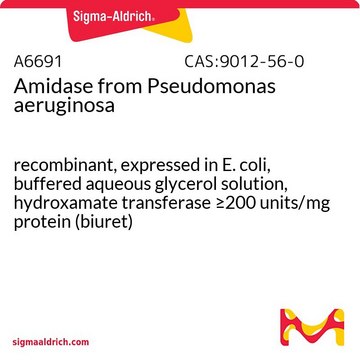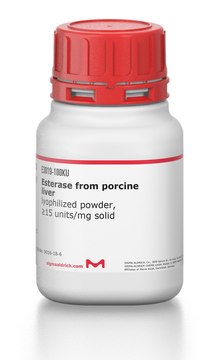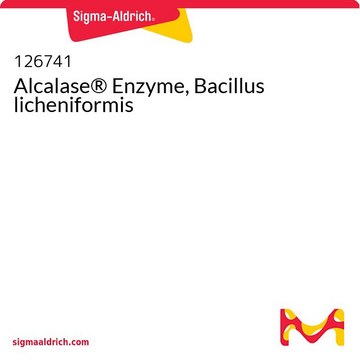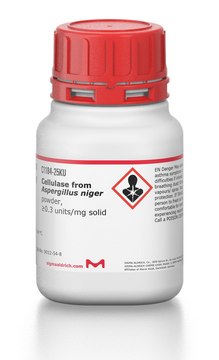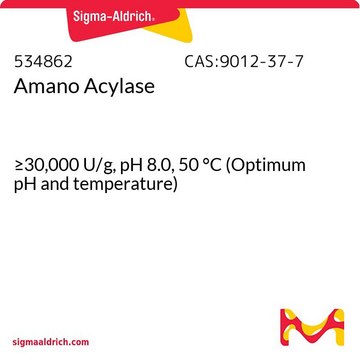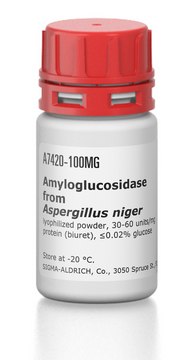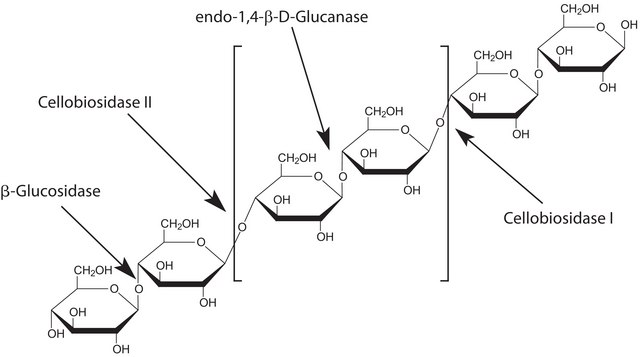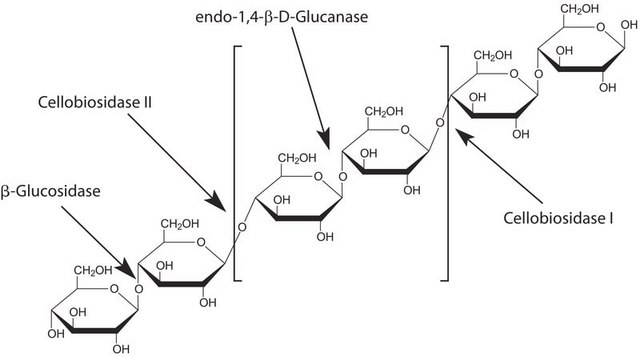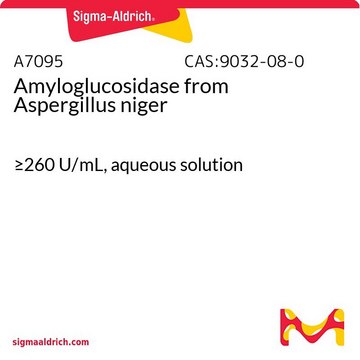推荐产品
重组
expressed in E. coli
表单
crystal lumps
lumps
powder
比活
≥1.5 U/mg
储存温度
2-8°C
应用
Amidase is used to study metabolic pathways such as the urea cycle, phenylalanine metabolism, tryptophan metabolism, cyanoamino acid metabolism, and styrene degradation. They are used to hydrolyse peptidoglycan substrates and are used in biocatalysis for the chemoselective, regioselective, or enantioselective hydrolysis of various amides. Amidases may be used for the production of antibiotics, the hydrolysis of C-terminal amide groups in peptides, the analysis of glycoproteins, or for the transformation of cyclic imides.
生化/生理作用
An amidase is a hydrolase that catalyzes the hydrolysis of an amide. Amidase converts a monocarboxylic acid amide and H2O into a monocarboxylate and NH3. Amidases contain a conserved stretch of approximately 130 amino acids which is known as the AS sequence. Amidases possess a highly conserved Ser-Ser-Lys catalytic triad which is responsible for amide hydrolysis.
包装
Bottomless glass bottle. Contents are inside inserted fused cone.
单位定义
1 U corresponds to the amount of enzyme which hydrolyzes 1 μmol nicotinamide to nicotinic acid per minute at pH 7.2 and 30°C
警示用语:
Danger
危险声明
危险分类
Resp. Sens. 1 - Skin Sens. 1
储存分类代码
13 - Non Combustible Solids
WGK
WGK 3
闪点(°F)
Not applicable
闪点(°C)
Not applicable
法规信息
新产品
Sandra Trott et al.
Applied and environmental microbiology, 68(7), 3279-3286 (2002-06-29)
The gene for an enantioselective amidase was cloned from Rhodococcus erythropolis MP50, which utilizes various aromatic nitriles via a nitrile hydratase/amidase system as nitrogen sources. The gene encoded a protein of 525 amino acids which corresponded to a protein with
Anna Liza B Valiña et al.
Biochemistry, 43(50), 15657-15672 (2004-12-15)
Peptide amidase (Pam), a hydrolytic enzyme that belongs to the amidase signature (AS) family, selectively catalyzes the hydrolysis of the C-terminal amide bond (CO-NH(2)) of peptides. The recent availability of the X-ray structures of Pam, fatty acid amide hydrolase, and
Sebastian Zoll et al.
Journal of bacteriology, 194(15), 3789-3802 (2012-05-23)
The bifunctional major autolysin Atl plays a key role in staphylococcal cell separation. Processing of Atl yields catalytically active amidase (AM) and glucosaminidase (GL) domains that are each fused to repeating units. The two repeats of AM (R1 and R2)
Mo-Fei Li et al.
Fish & shellfish immunology, 32(2), 322-330 (2011-12-08)
Peptidoglycan recognition proteins (PGRPs) are a family of innate immune molecules that recognize bacterial peptidoglycan. PGRPs are highly conserved in invertebrates and vertebrates including fish. However, the biological function of teleost PGRP remains largely uninvestigated. In this study, we identified
Vikash Babu et al.
Colloids and surfaces. B, Biointerfaces, 89, 277-282 (2011-09-29)
In this study, enzymatic surface modification of polyacrylonitrile was studied using nitrile metabolizing enzyme of Amycolatopsis sp. IITR 215. During enzymatic treatment of polyacrylonitrile at pH of 5.8 and 7, it was observed that the conversion of cyano group to
我们的科学家团队拥有各种研究领域经验,包括生命科学、材料科学、化学合成、色谱、分析及许多其他领域.
联系技术服务部门